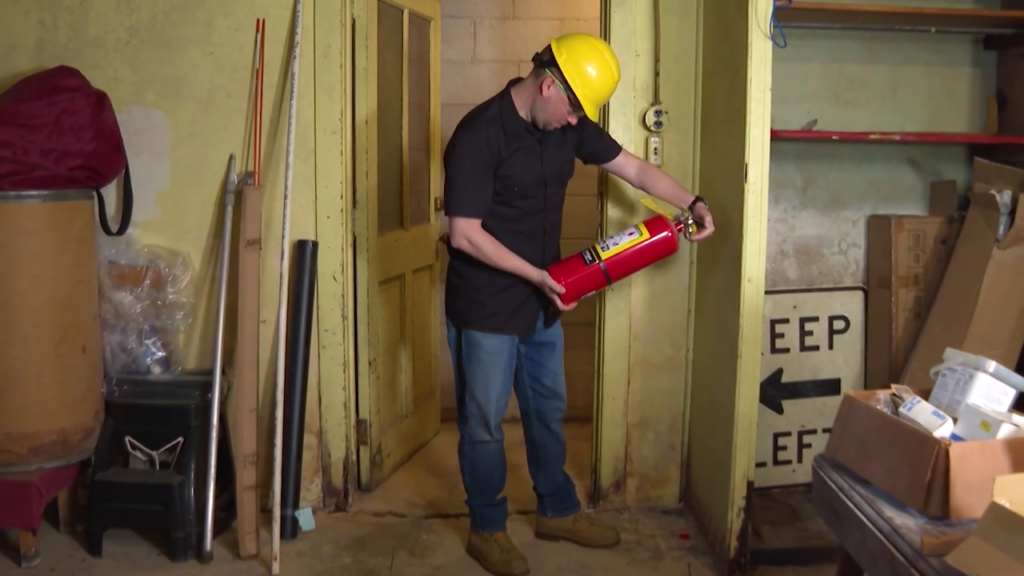
Over the two-year 2021 to 2022 period, there were 2.2 million cases of workplace injuries involving days away from work, which doesn’t include minor accidents that also occurred during that time. Workplace injuries are an unavoidable part of many industries, but that doesn’t mean unsafe conditions have to be the norm. With many sectors putting workers in harsh environments, workplace safety training is more important than ever.
While training can’t eliminate all injuries, it can supply the workforce with beneficial knowledge to better protect themselves.
OSHA Training Requirements
Under the Occupational Safety and Health Act of 1970, employers are responsible for providing a safe and healthy workplace to protect employees from injury, illness or death. OSHA works to ensure all companies in every industry meet the necessary standards by creating and monitoring safety regulations and best practices all companies must follow. Before OSHA, there was no government agency observing businesses, nor were there set mandates for all companies across every industry.
OSHA compliance can be achieved by following OSHA training requirements. To accomplish this, safety and health professionals, employers and training directors need to be aware of the laws regarding their sector. That way, they can ensure they’re meeting expectations and giving their workforce the necessary resources and tools to stay safe in the workplace.
So what does high-quality and cooperative workplace education look like? According to OSHA standards, effective safety training should teach participants:
- How to identify the safety and health problems at their workplace.
- How to analyze the causes of these safety and health problems.
- How to bring about safer, healthier workplaces.
- How to involve their co-workers in accomplishing all of the above.
Regulatory compliance requires employee training to involve important topics, such as:
- Respiratory protection.
- Hazard communication and the handling of hazardous materials.
- Workplace violence prevention.
- Electrical safety.
- Fire safety.
- Fall protection.
- Workplace injury response.
- An emergency action plan.
On top of that, OSHA encourages employers to review these documents:
- ANSI/ASSP Criteria for Accepted Practices in Safety.
- Health and Environmental Training.
- ANSI/ASSP Z490.1-2009.
- ANSI: American National Standards Institute.
- ASSP: American Society of Safety Professionals.
- NIEHS WETP Minimum Health and Safety Training Criteria Guidance for Hazardous. OCCUPATIONAL SAFETY AND HEALTH ADMINISTRATION 2 Waste Operations and Emergency Response (HAZWOPER); HAZWOPER Supporting and All Hazards Prevention, Preparedness and Response.
- NIEHS: National Institute of Environmental Health Sciences.
- WETP: Worker Education and Training Program.

Characteristics of Strong Training Programs
It’s not always enough to simply skim through the appropriate documents — the most effective safety training program delivers the information accurately and clearly, using credible data and practical advice.
Accurate
Not just any materials work for training employees. The resources should be prepared by qualified experts who know what data is important to share and can update information as time goes by and requirements change. Also, the training must be presented by knowledgeable individuals who utilize instructional best practices and methods.
OSHA is responsible for keeping rules adapted to the most up-to-date data. This means there will be changes in training mandates annually, requiring resources to be refurbished to provide the most accurate information to workers.
Clear
Companies may provide the highest quality of materials, but if the way the information is shared isn’t straightforward and easy to understand, it doesn’t assist the employees. A safety training program must be accurate, and it must also be clear to the audience.
Employers are presenting safety best practices to a workforce varied in education levels, meaning the details shared must be understandable to meet each person’s needs. Cut unnecessary jargon and complicated wording to enable the program to be as effective as possible. Also, include multiple language options for documentation and resources for individuals whose first language isn’t English.
Credible
While facilitators of training materials don’t have to be experts in all things OSHA, they should have a good knowledge of requirements and a background in safety and health. This will help the credibility of the individual and ensure each employee feels comfortable learning the right information from this person.
Practical
Not all pieces of information will directly impact the workers attending the training, but most materials should present information, ideas and skills participants find useful for work. This includes safety tips for the specific industry the company is part of and protective measures for materials or equipment used by workers daily.
Ultimately, the most successful workplace safety training transfer data that can be applied in the workplace rather than data that doesn’t affect those listening.

How To Promote Safe Work Practices
Ready to make your workplace a safer environment for individuals to accomplish their jobs? Follow these guidelines to promote worker safety:
Provide Injury and Illness Prevention Programs
A strong injury and illness prevention program can help employers find and fix workplace hazards proactively before workers get hurt. OSHA defines a successful and effective prevention program to be based on a common set of key elements:
- Management leadership.
- Worker participation.
- Hazard identification.
- Hazard prevention and control.
- Education and training.
- Program evaluation and improvement.
Train Employers and Employees On Their Specific Roles
Each role in any industry has specific and unique dangers that workers should be aware of, whether they seem like a safety threat or not. Take the time to train managers and upper-level employers and employees alike in all areas of business that involve them.
Provide Information On Hazard Controls and Safety Best Practices
Knowing what elements of a particular role are the most dangerous is critical to promoting a safety culture in the workplace. Train your employees on possible hazards and chemicals they may come into contact with and give them information on handling these materials safely.
Video Training Power: A Modern Workplace Safety Training Solution
Prepare your employees for any situation and give them the tools they need to respond by using Video Training Power’s expansive selection of safety training videos. With a subscription to our online instructional materials, you’ll unlock limitless resources built for a classroom setting — all on-demand and available when you need them.
Get started with Video Training Power today.